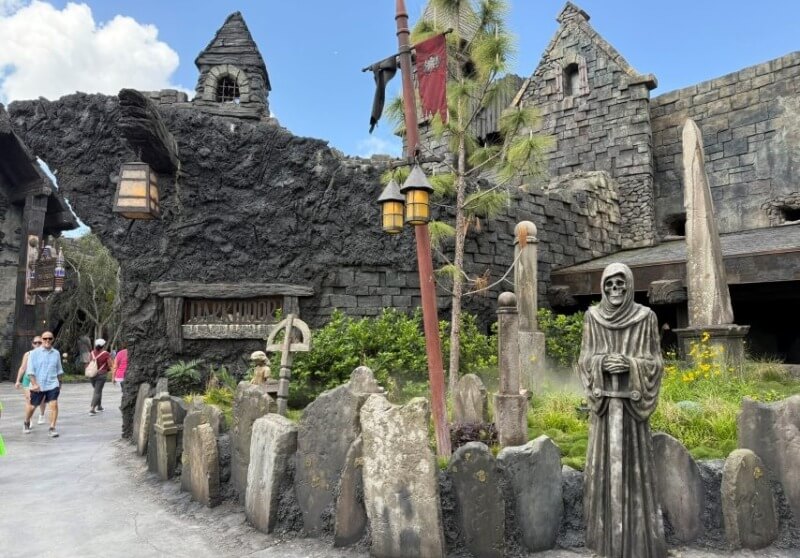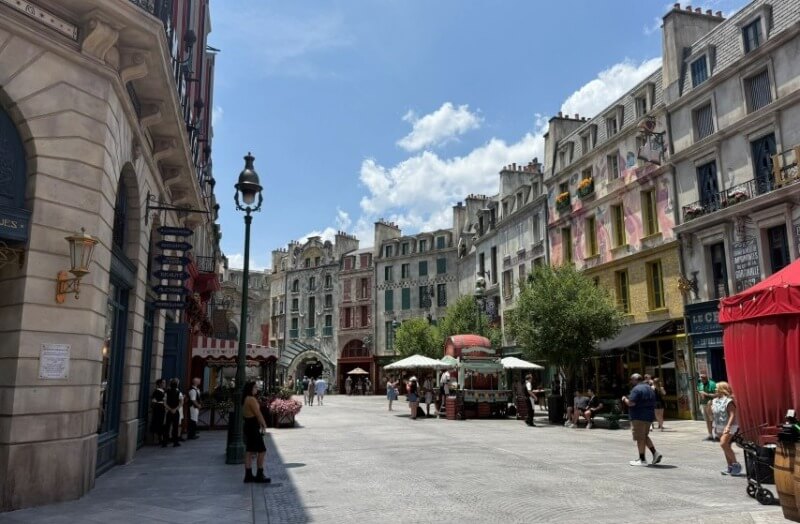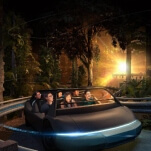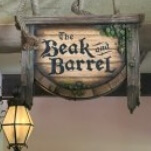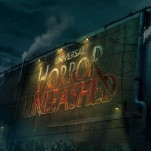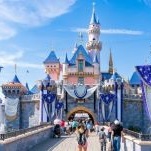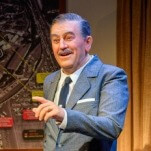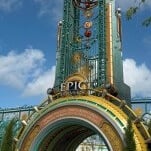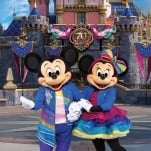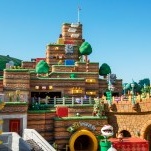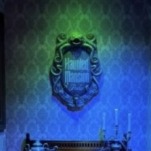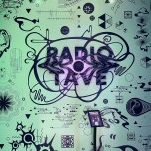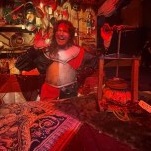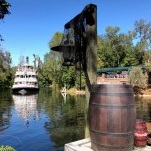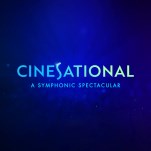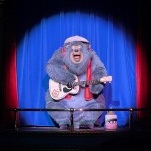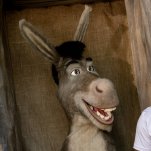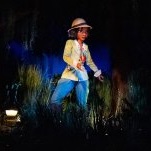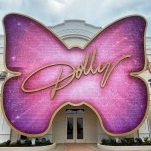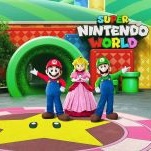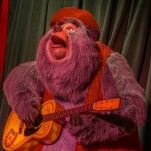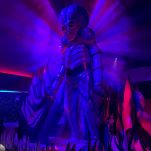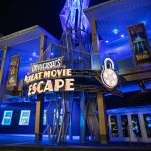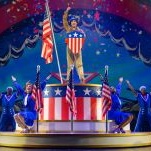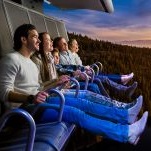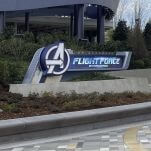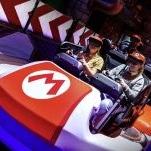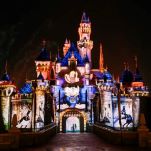Epic Universe: The Triumph of the Post-Theme Park
Photos by Garrett Martin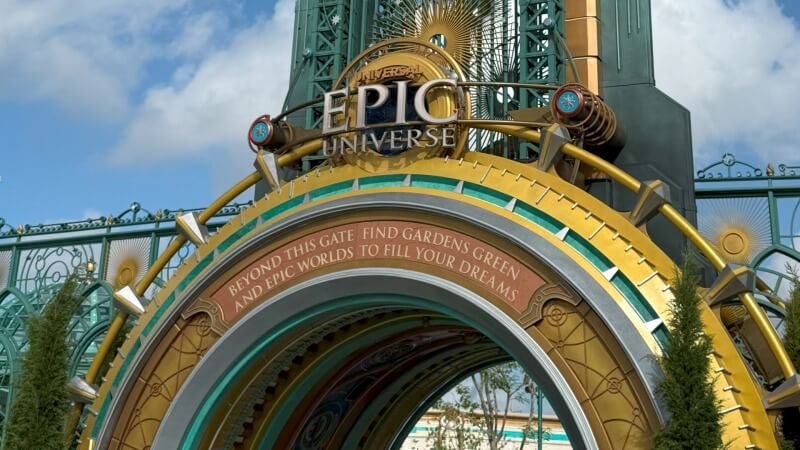
If you follow theme parks, you no doubt know that Epic Universe, Universal’s new playland, opened last week. It’s a huge deal for Universal, for theme park fans, and for theme parks as an artform. New theme parks don’t happen often; Epic Universe is the first new American theme park from Universal since 1999’s Islands of Adventure (we don’t count water parks like Volcano Bay as theme parks; they’re their own thing). It’s the first one in the States from either Universal or Disney, the two biggest players in this market, since 2001. It’s Universal’s chance to establish its Orlando resort as a true week-long vacation destination, but also an opportunity for the theme park upstart to pull ahead of industry stalwart Disney in terms of pushing this unique type of entertainment forward. Since rumors first started spreading in 2018, Universal’s third American park has been the biggest story in the industry, with one major question underlying all the speculation: could Universal pull it off and level the playing field with its main rival?
After a couple of trips to Epic Universe, including a one-day preview two months ago and an exhaustive deep dive into all five of its lands across two days last week, I feel like I can tentatively answer that question with one word: kinda?
Okay, I have no idea how Epic Universe will impact Universal’s business, or if it’ll pull visitors away from Disney World. (Honestly, America becoming inhospitable to foreigners will have way more of an immediate impact on attendance at not just Disney but Universal and any other theme parks popular with international travelers.) I do feel pretty confident calling Epic Universe both an impressive, exciting theme park and a success from an artistic standpoint—albeit a sometimes frustrating, oddly unfulfilling one.
If this is the first you’re hearing of Epic Universe, here are the basic facts. It’s the third park at Universal Orlando Resort, joining the original Universal Studios Florida and Universal’s Islands of Adventure. It has five lands, four based on popular intellectual property—Nintendo’s Super Mario and Donkey Kong games, Harry Potter, How to Train Your Dragon, and the classic Universal Monsters—and a central hub connecting them that has a cosmic theme and strives to resemble an updated take on a turn-of-the-century amusement park. There are 11 rides spread across those five lands, as well as two sit-down shows, meet and greets with characters in every land, various interactive experiences throughout the whole park, and several sit-down and quick service restaurants. (There’s also a pretty sweet bar inside a flaming windmill. It’s rad.) Unlike some new theme parks, which often open with a relatively small slate of offerings with planned second and third phases already under construction, Epic Universe opens as a fully realized, full-day park—one that should keep you busy from open to close.
This focus on disparate, disconnected IP instead of a broad, overriding theme marks the fullest, most cogent expression yet of the direction theme parks have been moving in for the last couple of decades. It’s tempting to call Epic Universe a post-theme park. Compare it to Disney’s most recent Orlando park; Disney’s Animal Kingdom opened in 1998 and remains an excellent example of how theme parks used to be designed, retaining a coherent theme throughout, even with the awkward later inclusion of James Cameron’s Avatar. Epic Universe, in comparison, is a random collection of ideas that are thoroughly themed internally but don’t even attempt to have any relation to each other.
This is where theme parks have been headed since Islands of Adventure opened in 1999, with lands based on Dr. Seuss, Marvel Comics, Jurassic Park, and more. That park paid lip service to a driving concept through its “ports of call” framing device, and Epic Universe does something similar with a backstory about how the entrance to each land is a portal to a different time and place full of its own unique adventure. The allure of these IP parks is so strong that Disney has retroactively converted some of its parks into them; Disney California Adventure, which had a notoriously rough launch in 2001 with lands themed entirely after different parts of the state, is now home to unrelated areas based on Marvel, Pixar, and the Cars movies. Disney’s Hollywood Studios has gone from a park built around a working studio and the history of the film and entertainment industries to a bunch of lands based on specific movies. The individual lands can be wonderful works of art (see Star Wars—Galaxy’s Edge), but those conversions are far from seamless; you can tell both California Adventure and Hollywood Studios are cobbled together patchwork parks without an intentional, consistent design sense. Epic Universe avoids that clunkiness by making the lack of a theme the explicit theme of the park. In Epic Universe every land has its own, completely independent theme; that might keep the park from ever reaching the grandeur and cohesive beauty of Animal Kingdom or Tokyo DisneySea, but it guarantees that any future additions will fit perfectly, avoiding the aesthetic clashes found at other theme parks. You can tell Epic Universe was with the lessons of the last 25 years in mind.
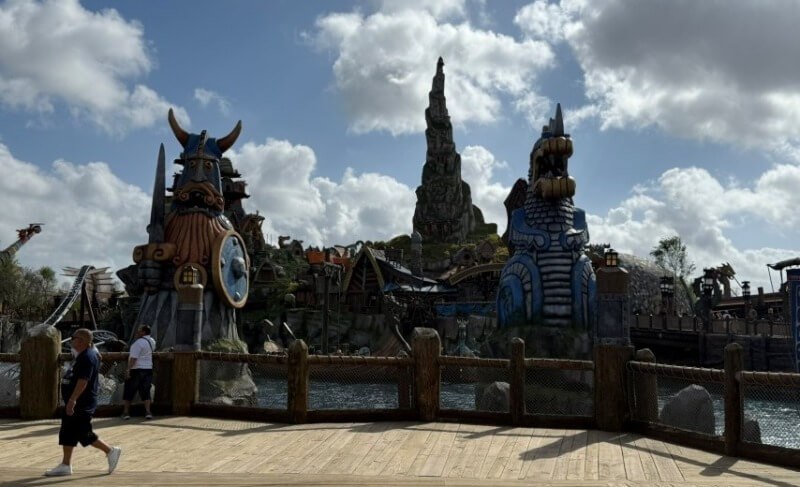
There might not be any thematic unity between Epic Universe’s five lands, but they’re all brilliantly designed on their own—well, at least four of the five are. The biggest surprise is the Isle of Berk. I think most would agree that How to Train Your Dragon is the least established of Epic Universe’s four brands, and maybe that’s why Universal’s designers went so hard with its land: they wanted to make sure everybody was enamored with it, even if they’ve never seen the movies it’s based on. Well, mission accomplished. Everything in Isle of Berk looks hand-carved out of wood, from the large viking statues that greet you near the entrance, to every one of its waterfront village’s buildings. There are interactive displays found throughout the land—spin a wheel to make a viking figure bring a horn to its lips, or make a wooden dragon flap its wings—that are the kind of minor but charming grace notes that separate a good themed space from a great one. And it’s full of life, with multiple walk-around characters, including one of the dragon variety, and a meet-and-greet with the main dragon hero Toothless. If you time it just right, you can even get a nice blast of cool air from the mouth of a giant frost dragon animatronic.
Berk is also home to three rides, one of which is among the park’s very best. Hiccup’s Wing Gliders is a pleasantly thrilling family coaster with multiple launches (including one after a false stop), two story scenes, and an incredible Toothless animatronic. The other rides aren’t really anything to rave about; Dragon Racer’s Rally is a basic carnival-style spinner ride, and Fyre Drill is less of a ride than a pretext for getting absolutely soaked (which is always important in the Orlando heat). In addition to the rides, Berk also hosts the better of Epic Universe’s two live shows. The Untrainable Dragon is a cute, kid-friendly stage musical that unexpectedly has one of the most amazing moments found in the entire park (you’ll know it when you see the big reveal). Yes, two of the land’s three rides are among the park’s worst, and yet that doesn’t matter: Isle of Berk is a living, breathing art project that you’ll spend hours exploring. And that doesn’t even get into the food, which balances hearty staples with inspired theme park fare (like mac and cheese in a bread cone, which was a big hit at the media preview), and gives Epic Universe one of its most transfixing buildings in the form of the heavily detailed Mead Hall.
Berk is a revelation, but every land carries its weight. Your first time entering Super Nintendo World is genuinely magical. After entering a green pipe right out of Super Mario Bros. and walking through Princess Peach’s castle you’ll arrive in the heart of the Mushroom Kingdom—the videogame world we’ve been romping through in Mario games for 40 years. Like the version that opened in California in 2023, Epic Universe’s Nintendo land seamlessly turns the videogame world into a real place you can visit, with marching koopas, snake-like piranha plants, the endlessly disposable goombas, and other Mario critters moving about everywhere. I’ve already written a whole piece devoted solely to Super Nintendo World, but here’s a recap: The two Mario-themed rides, Mario Kart: Bowser’s Challenge and the modest Yoshi’s Adventure, are fine, if unexceptional, dark rides ideal for kids and families. More impressive is the land’s interactive elements, from the real-life games you play to unlock a boss battle against an animatronic Bowser Jr., to the question mark-bearing coin blocks you can punch to collect coins on the Power Up brand on your wrist. And although I haven’t had the best experiences with the sitdown restaurant Toadstool Cafe or its food, I still strongly recommend a visit, if only to see the animated story vignettes that play on the restaurant’s fake windows. The best thing about Super Nintendo World’s Mushroom Kingdom is simply existing within it, hearing that iconic music, seeing the adorable creatures we’ve been battling since childhood come to life, and meeting Mario, Luigi, Peach and Toad.
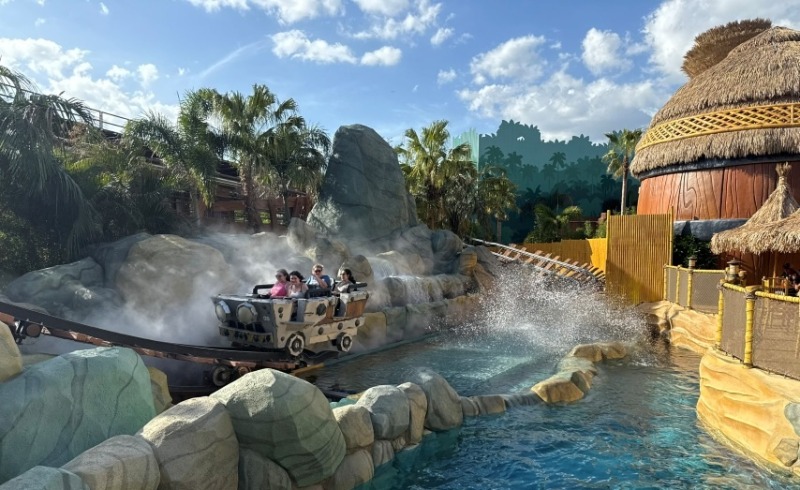
-

-

-

-

-

-

-

-

-

-

-

-

-

-

-

-

-

-

-

-

-

-

-

-

-

-

-

-

- Should You Stay at Walt Disney World's Swan and Dolphin and Swan Reserve Resorts? By Garrett Martin December 19, 2023 | 12:00pm
-

-

-

-

-

-

-

-

-

-

-

